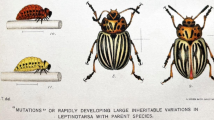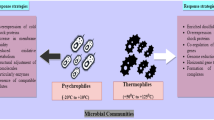Abstract
Transposable elements are a nearly ubiquitous component of eukaryotic genomes. While often described as parasitic genetic elements, other evidence suggests that transposable elements can become domesticated and contribute to organismal function. There is little empirical data on the positive or negative contribution of transposable elements to organismal traits. We hypothesized that mutations in transposable element genes would have less deleterious effects than mutations in other plant genes. We conducted an assay of phenotypes associated with growth and reproduction in a collection of insertion mutation lines in Arabidopsis thaliana that disrupted the sequence of a transposable element gene. The transposable element loci were from locations dispersed across the genome, and included loci from several element families. Overall, we found that mutants in transposable element genes were similar to mutants in other types of loci for the measured traits, in most cases with a distribution of effects centered on life history trait values of wild-type plants critical to population ecology processes. If transposable elements are predominantly parasitic, their deleterious effects were not uncovered by these disruptive mutations. Further characterization of the positive, negative or neutral contribution of transposable element sequences would address unresolved questions about the contribution of transposition and selection to genome evolution.




Similar content being viewed by others
References
Adrion JR, Begun DJ, Hahn MW (2019) Patterns of transposable element variation and clinality in Drosophila. Mol Ecol 28:1523–1536
Ågren J, Oakley CG, McKay JK, Lovell JT, Schemske DW (2013) Genetic mapping of adaptation reveals fitness tradeoffs in Arabidopsis thaliana. Proc Natl Acad Sci 110(52):21077–21082
Bates D, Maechler M, Bolker B, Walker S (2015) Fitting linear mixed-effects models using lme4. J Stat Softw 67:1–48
Baud et al Biorxiv (perhaps include)
Bennetzen JL (2000) Transposable element contributions to plant gene and genome evolution. Plant Mol Biol 42:251–269
Blanc VM, Adams J (2004) Ty1 insertions in intergenic regions of the genome of Saccharomyces cerevisiae transcribed by RNA polymerase III have no detectable selective effect. FEMS Yeast Res 4:487–491
Bouché N, Bouchez D (2001) Arabidopsis gene knockout: phenotypes wanted. Curr Opin Plant Biol 4:111–117
Bousios A, Gaut BS (2016) Mechanistic and evolutionary questions about epigenetic conflicts between transposable elements and their plant hosts. Curr Opin Plant Biol 30:123–133
Bundock P, Hooykaas P (2005) An Arabidopsis hAT-like transposase is essential for plant development. Nature 436:282–284
de la Chaux N, Tsuchimatsu T, Shimizu KK, Wagner A (2012) The predominantly selfing plant Arabidopsis thaliana experienced a recent reduction in transposable element abundance compared to its outcrossing relative Arabidopsis lyrata. Mobile DNA 3:2
Dubin MJ, Mittelsten Scheid O, Becker C (2018) Transposons: a blessing curse. Curr Opin Plant Biol 42:23–29
Elena SF, Ekunwe L, Hajela N, Oden SA, Lenski RE (1998) Distribution of fitness effects caused by random insertion mutations in Escherichia coli. Genetica 102(103):349–358
Hollister JD, Smith LM, Guo Y, Ott F, Weigel D, Gaut BS (2010) Transposable elements and small RNAs contribute to gene expression divergence between Arabidopsis thaliana and Arabidopsis lyrata. PNAS 108:2322–2327
Hosaka A, Saito R, Takashima K, Sasaki T, Fu Y, Kawabe A, Ito T, Toyoda A, Fujiyama A, Tarutani Y, Kakutani T (2017) Evolution of sequence-specific anti-silencing systems in Arabidopsis. Nat Commun 8:1–10
Hudson ME, Lisch DR, Quail PH (2003) The FHY3 and FAR1 genes encode transposase-related proteins involved in regulation of gene expression by the phytochrome A-signaling pathway. Plant J 34:453–471
Ito H, Kim J-M, Matsunaga W, Saze H, Matsui A, Endo TA, Harukawa Y, Takagi H, Yaegashi H, Masuta Y, Masuda S, Ishida J, Tanaka M, Takahashi S, Morosawa T, Toyoda T, Kakutani T, Kato A, Seki M (2016) A stress-activated transposon in Arabidopsis induces transgenerational abscisic acid insensitivity. Sci Rep 6:23181
Joly-Lopez Z, Bureau TE (2014) Diversity and evolution of transposable elements in Arabidopsis. Chromosome Res 22:203–216
Kejnovsky E, Hawkins JS, Feschotte C (2012) Plant transposable elements: biology and evolution. In: Wendel JF et al (eds) Plant genome diversity, vol 1. Springer, Wien, pp 17–34
Kidwell MG, Lisch DR (2001) Perspective: transposable elements, parasitic DNA, and genome evolution. Evolution 55:1–24
Kim N-S (2017) The genomes and transposable elements in plants: are they friends or foes? Genes Genom 39:359–370
Leonardo TE, Nuzhdin SV (2002) Intracellular battlegrounds: conflict and cooperation between transposable elements. Genet Res Camb 80:155–161
Lin R, Ding L, Casola C, Ripoli DR, Feschotte C, Wang H (2007) Transposase-derived transcription factors regulate light signaling in Arabidopsis. Science 318:1302–1305
Linquist S, Cottenie K, Elliott TA, Saylor B, SC Kremer, Gregory TR (2015) Applying ecological models to communities of genetic elements: the case of neutral theory. Mol Ecol 24(13):3232–3242
Lockton S, Gaut BS (2009) The contribution of transposable elements to expressed coding sequence in Arabidopsis thaliana. J Mol Evol 68:80–89
Mauricio R (1998) Costs of resistance to natural enemies in field populations of the annual plant Arabidopsis thaliana. Am Nat 151:20–28
Mirouze M, Reinders J, Bucher E, Nishimura T, Schneeberger K, Ossowski S, Cao J, Weigel D, Paszkowski J, Mathieu O (2009) Selective epigenetic control of retrotransposition in Arabidopsis. Nature 461:427–430
Murren CJ, Kohler C, Balazs RJ, Bassett R, Beacham A, Cousins EA, Frazier A, Hill BM, Rendleman AJ, Senn LHR, Strand AE, Musselman OD (2020) Gene type and mutation position influence responses in root traits across nutrient environments. Int J Plant Sci 181(2):210–223
O’Malley RC, Ecker JR (2010) Linking genotype to phenotype using the Arabidopsis unimutant collection. Plant J 61:928–940
Oberlin S, Sarazin A, Chevalier C, Voinnet O, Marí-Ordóñez A (2017) A genome-wide transcriptome and translatome of Arabidopsis transposons identifies a unique and conserved genome expression strategy for Ty1/Copia retroelements. Genome Res 27:1549–1562
Quadrana L, Bortolini Silveira A, Mayhew GF, LeBlanc C, Martienssen RA, Jeddeloh JA, Colot V (2016) The Arabidopsis thaliana mobilome and its impact at the species level. eLife 5:15716
Richards CL, Alonso C, Becker C, Bossdorf O, Bucher E, Colomé-Tatché M, Durka W, Engelhardt J, Gaspar B, Gogol-Döring A, Grosse I, van Gurp TP, Heer K, Kronholm I, Lampei C, Latzel V, Mirouze M, Opgenoorth L, Paun O, Prohaska SJ, Rensing SA, Stadler PF, Trucchi E, Ullrich K, Verhoeven KJF (2017) Ecological plant epigenetics: evidence from model and non-model species, and the way forward. Ecol Lett 20:1576–1590
Rutter MT, Wieckowski YM, Murren CJ, Strand AE (2017) Fitness effects of mutation: testing genetic redundancy in Arabidopsis thaliana. J Evol Biol 30:1124–1135
Rutter MT, Roles AJ, Fenster CB (2018) Quantifying natural seasonal variation in mutation parameters with mutation accumulation lines. Ecol Evol 8:5575–5585
Rutter MT, Murren CJ, Callahan HS, Bisner A, Leebens-Mack J, Wolyniak MJ, Strand AE (2019) Distributed phenomics with the unPAK project reveals the effects of mutations. Plant J. https://doi.org/10.1111/tpj.14427
Sahebi M, Hanafi MM, van Wijnen AJ, Rice D, Rafii MY, Azizi P, Osman M, Taheri S, Bakar MFA, Isa MNM, Noor YM (2018) Contribution of transposable elements in the plant’s genome. Gene 665:155–166
Seymour DK, Koenig D, Hagmann D, Becker C, Weigel D (2014) Evolution of DNA methylation patterns in Brassicaceae is driven by differences in genome organizations. PLoS Genet 10:e1004785
Stroud H, Greenberg MVC, Feng S, Bernatavichute YV, Jacobsen SE (2013) Comprehensive analysis of silencing mutants reveals complex regulation of the Arabidopsis methylome. Cell 152:352–364
Tenaillon MI, Hollister JD, Gaut BS (2010) A triptych of the evolution of plant transposable elements. Trends Plant Sci 15:471–478
Underwood CJ, Henderson IR, Martienssen RA (2017) Genetic and epigenetic variation of transposable elements in Arabidopsis. Curr Opin Plant Biol 36:135–141
Valentine ME, Wolyniak MJ, Rutter MT (2012) Extensive phenotypic variation among allelic T-DNA inserts in Arabiopsis thaliana. PLoS ONE 7:e44981
Volff J-N (2006) Turning junk into gold: domestication of transposable elements and the creation of new genes in eukaryotes. BioEssays 28:913–922
Weng ML, Becker C, Hildebrandt J, Neumann M, Rutter MT, Shaw RG, Weigel D, Fenster CB (2019) Fine-grained analysis of spontaneous mutation spectrum and frequency in Arabidopsis thaliana. Genetics 211:703–714
Wickham H (2016) ggplot2: elegant graphics for data analysis. Springer, New York
Wickham H, Francois R, Henry L, Müller K (2019) dplyr: a grammar of data manipulation. Package version 0.8.1. https://CRAN.R-project.org/package=dplyr. Accessed 2019
Wilke CM, Adams J (1992) Fitness effects of Ty transpositions in Saccharomyces cerevisiae. Genetics 131:31–42
Yang H, Chang F, You C, Cui J, Zhu G, Wang L, Zheng Y, Qi J, Ma H (2015) Whole-genome DNA methylation patterns and complex association with gene structure and expression during flower development in Arabidopsis. Plant J 81:266–281
Yu Z, Wright SI, Bureau TE (2000) Mutator-like elements in Arabidopsis thaliana: structure, diversity and evolution. Genetics 156:2019–2031
Zhao D, Ferguson AA, Jiang N (2016) What makes up plant genomes: the vanishing line between transposable elements and genes. Biochim Biophys Acta 1859:366–380
Acknowledgements
We thank the National Science Foundation for funding support (IOS-1355106 to MTR, CJM and AES, IOS-1355041 to HSC).
Author information
Authors and Affiliations
Corresponding author
Additional information
Publisher's Note
Springer Nature remains neutral with regard to jurisdictional claims in published maps and institutional affiliations.
Electronic supplementary material
Below is the link to the electronic supplementary material.
Rights and permissions
Springer Nature or its licensor holds exclusive rights to this article under a publishing agreement with the author(s) or other rightsholder(s); author self-archiving of the accepted manuscript version of this article is solely governed by the terms of such publishing agreement and applicable law.
About this article
Cite this article
Rutter, M.T., Bisner, A.M., Kohler, C. et al. Disrupting the disruptors: the consequences of mutations in mobile elements for ecologically important life history traits. Evol Ecol 34, 363–377 (2020). https://doi.org/10.1007/s10682-020-10038-0
Received:
Accepted:
Published:
Issue Date:
DOI: https://doi.org/10.1007/s10682-020-10038-0




